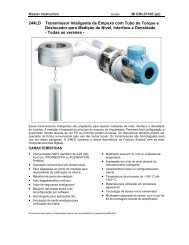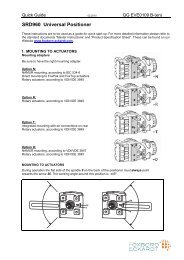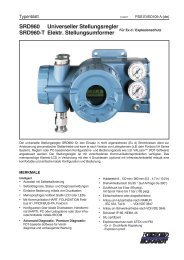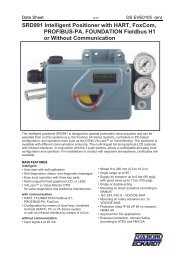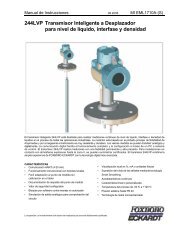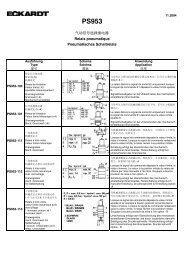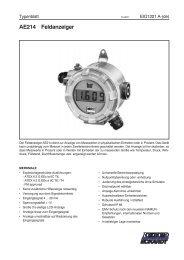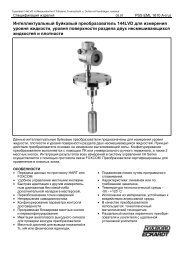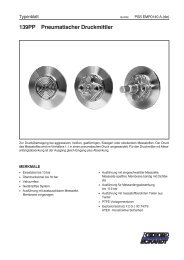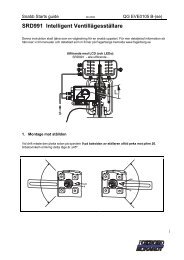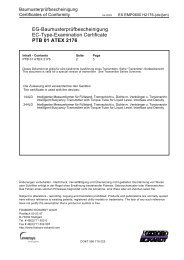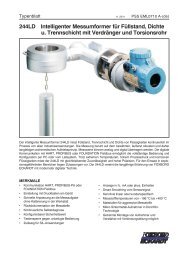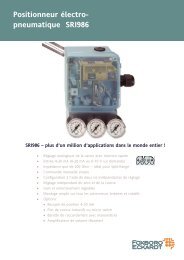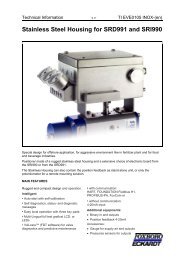english - FOXBORO ECKARDT GmbH
english - FOXBORO ECKARDT GmbH
english - FOXBORO ECKARDT GmbH
You also want an ePaper? Increase the reach of your titles
YUMPU automatically turns print PDFs into web optimized ePapers that Google loves.
Predictive Maintenance<br />
The DTM goes beyond the typical function of displaying<br />
a setpoint and measured values as it offers enhanced<br />
internal applications and methods to analyze valve<br />
data. The onboard functionality automatically retrieves<br />
and stores all important valve performance data collected<br />
by the positioner during operation.<br />
Diagnostic valve data is refreshed every 200ms which<br />
enables software to run on demand. As a result it is<br />
not required to run continuously on the control system<br />
and therefore can reduce unnecessary traffic on<br />
the communication signal.<br />
The internal diagnostic-routines continuously evaluate<br />
the state of the valve and inform an operator of any<br />
irregularities by executing a status alarm or diagnosticmessage.<br />
The self-surveillance mechanism complies<br />
the NAMUR – N107 standard.<br />
Total hours of operation of the device can be displayed,<br />
and service intervals can be timed accordingly<br />
using the Service Management screen. A set of histograms<br />
show Valve Position History and Valve Response<br />
History which can depict a valve performance over<br />
Valve Friction<br />
Stem friction greatly impacts valve performance. As<br />
such, tracking valve friction has become indispensable<br />
information in order to accurately develop predictive<br />
maintenance schemes for any control valve. Tracing<br />
valve friction allows identification of possible pneumatic<br />
leakages or stuck valves while preventing dangerous<br />
spills, injuries to personnel, or damage to plant equipment.<br />
Valve Signatures<br />
Valve Footprint is an off-line function that defines a<br />
reference behavior of the valve/actuator/positioner<br />
entity. Several types of signatures are available to<br />
define precisely the overall characteristic of the final<br />
control element such as:<br />
- Stepping signature<br />
- Ramping signature<br />
- Sensivity signature<br />
- Valve Footprint<br />
12<br />
time. The Stem Friction histogram is an additional tool that<br />
can be used to identify valve stickiness which is a common<br />
valve problem.<br />
Internal pressure sensors measure the output pressure<br />
for each setpoint change. In milliseconds, the microprocessor<br />
of the positioner calculates the friction of the<br />
stem against the packing. The actual friction value is then<br />
displayed as Measured- and Average-Value with additional<br />
drag-pointers for the Maximum- and Minimum-Value.



